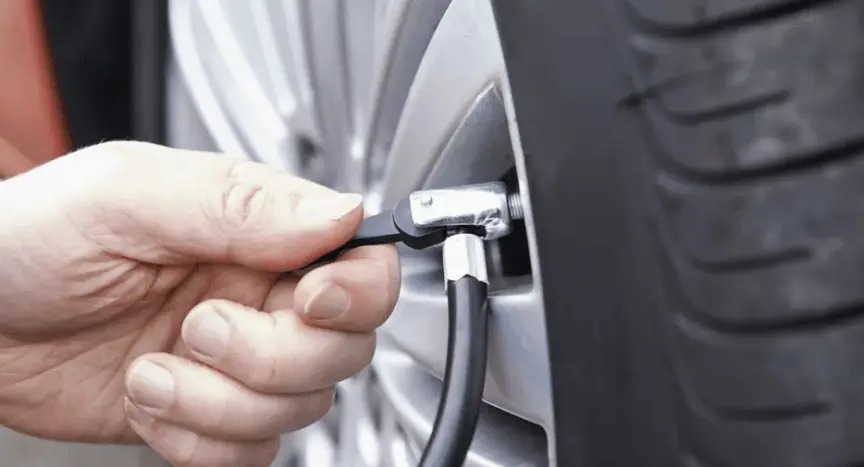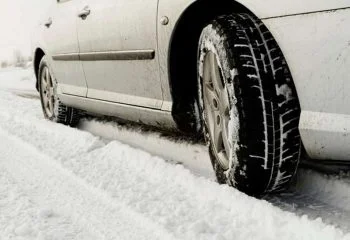If you’re like most drivers, you probably don’t think about your tires until there’s a problem. And by then, it’s often too late. A slow leak in a tire can be caused by any number of things, from a nail in the tread to a puncture in the sidewall.
If you don’t take care of it right away, that slow leak can turn into a big headache – and an expensive one, at that.
So how to fix a slow leak in a tire? In this post, we’ll take a look at some of the most common causes of leaks and how to repair them. Stay safe on the road!
What's in this post?
What is a slow leak in a tire?
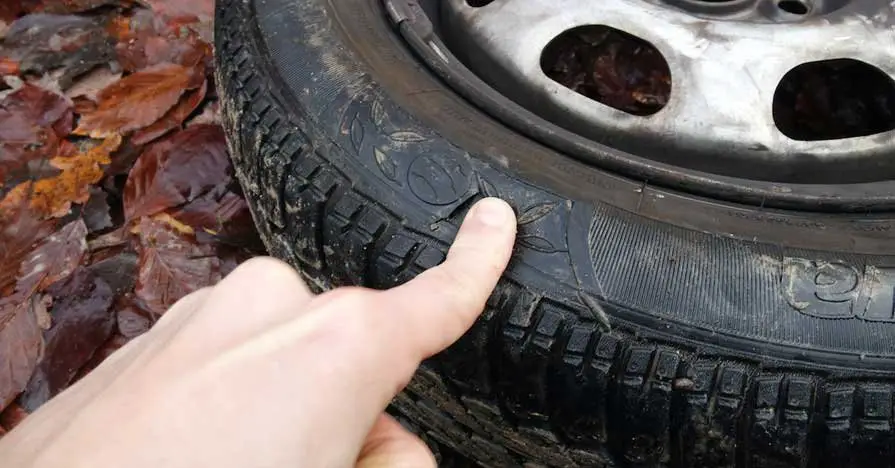
A slow leak in a tire is when air seeps out of the tire slowly over time. This can happen for a number of reasons, such as a small hole in the tire, a faulty valve stem, or a problem with the rim.
A slow leak can often go unnoticed until it becomes a flat tire. For this reason, it’s important to check your tires regularly for any signs of a leak.
If you do find a slow leak, you’ll need to take your car to a mechanic to have it repaired. In the meantime, you can try patching the hole with a tire plug kit.
What are the causes of it?
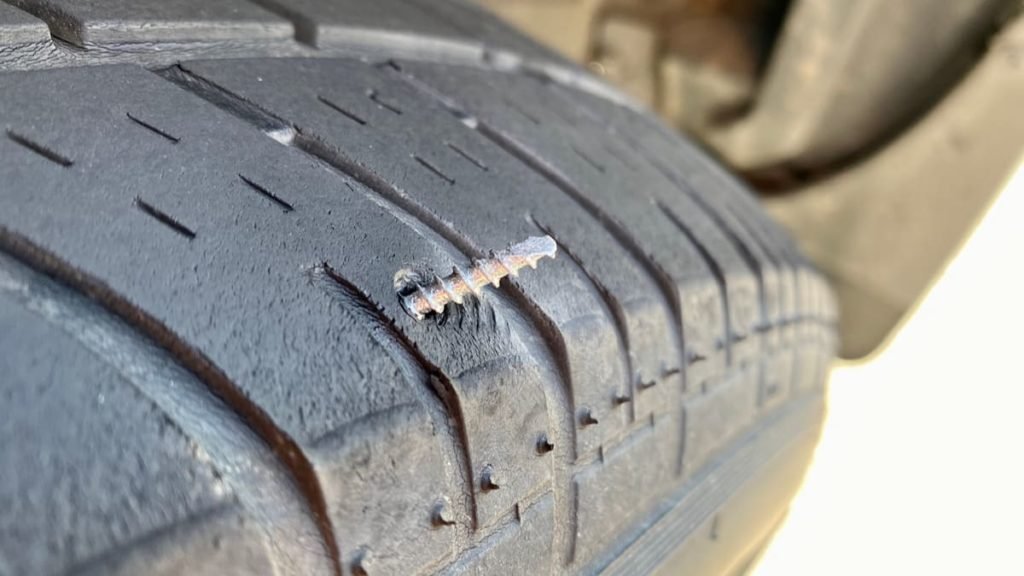
A slow leak in a tire can have several different causes. The most common are listed below.
Faulty valve stem
A slow leak in a tire can often be caused by a faulty valve stem. The valve stem is the part of the tire that helps to regulate air pressure and keep the tire inflated.
If the valve stem is damaged, it can cause a small hole to form in the tire, which will gradually lead to a slow leak. In some cases, the damage to the valve stem may be caused by simply jostling the tire too much, such as when changing a flat tire.
However, other times, the damage may be caused by more serious problems, such as impact from a pothole or debris on the road. Regardless of the cause, a slow leak in a tire can be very dangerous and should be repaired as soon as possible.
Puncture
A small hole in the tread can allow air to slowly escape, and over time this can lead to a significant loss in tire pressure.
Punctures can be caused by a number of things, from nails and other sharp objects to simply driving over rough terrain. In most cases, a puncture will cause an immediate loss of air pressure, but if the hole is small enough, it may only result in a slow leak.
If you notice that your tires are losing pressure over time, it’s important to have them checked for punctures. A small hole can quickly turn into a big problem if it’s not addressed in a timely manner.
Damaged rim
Another common cause of a slow leak in a tire is a damaged rim. The rim is the metal ring that holds the tire in place and helps to keep it inflated.
If the rim is bent or otherwise damaged, it can cause a small hole to form in the tire. This hole will gradually lead to a slow leak.
In some cases, the damage to the rim may be caused by a simple curb collision.
Tire bead leak
The bead is the edge of the tire that sits on the wheel, and it’s held in place by an inflated inner tube. If the bead leaks, air will slowly escape from the tire, causing it to go flat.
In some cases, the bead may also come unseated from the wheel, which can cause even more serious problems. Tire bead leaks are relatively easy to fix, but it’s important to catch them early before they cause too much damage.
Another possibility is that the bead seal, which helps to keep air in the tire, is not seated properly. This can happen if the tire is not properly inflated, or if it has been damaged.
Small crack in the sidewall
In some cases, a slow leak may also be caused by a small crack in the sidewall of the tire. The sidewall is the part of the tire that is between the tread and the rim. It is made up of multiple layers of rubber and other materials.
A crack in the sidewall can allow air to slowly escape from the tire. Over time, this can cause the tire to lose pressure and eventually go flat.
While these cracks are usually not large enough to cause an immediate problem, they can gradually get larger and cause air to leak out.
How to check if you have a slow leak in your tires
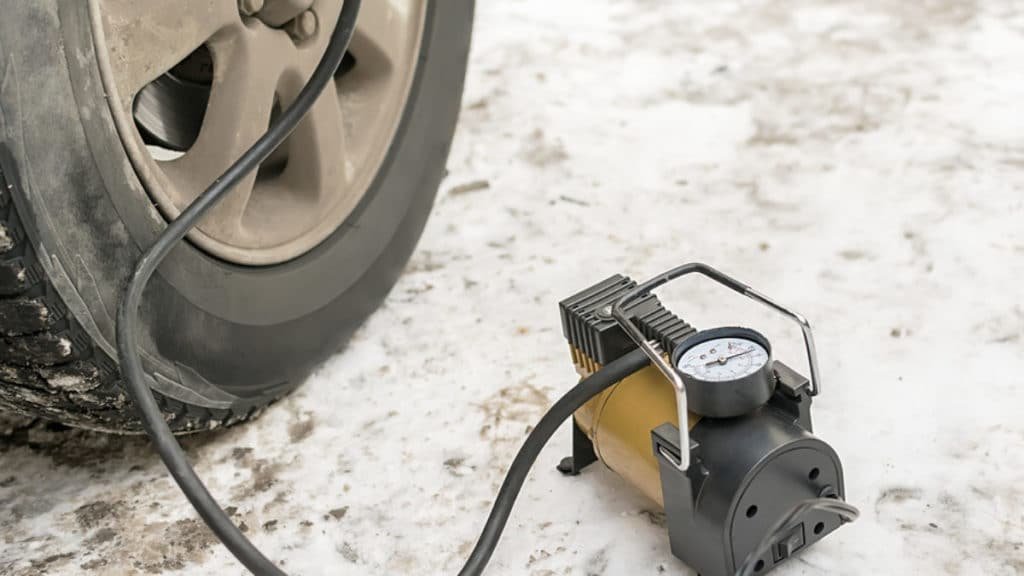
A slow leak in a tire can be difficult to detect, as it may not result in an immediate loss of air pressure. However, if left unchecked, a slow leak can cause serious damage to a tire, and may even lead to a blowout.
To check for a slow leak, start by inspecting the tires for any signs of damage, such as bulges or cracks. If you find any damage, it is likely that the tire is the source of the leak.
If the tire looks fine, it is still a good idea to check the air pressure. A sudden drop in air pressure could indicate that there is a slow leak.
The best way to check for a slow leak is to use a tire pressure gauge. To use the gauge, simply remove the valve cap and press the gauge onto the valve.
The gauge will give you a reading of the current air pressure in the tire. If the pressure is lower than it should be, there is likely a slow leak.
It’s important to check all four tires, as a slow leak can occur in any of them.
Useful read: Who Makes Mastercraft Tires? Are They Good?
How to fix a slow leak in a tire – step-by-step guide
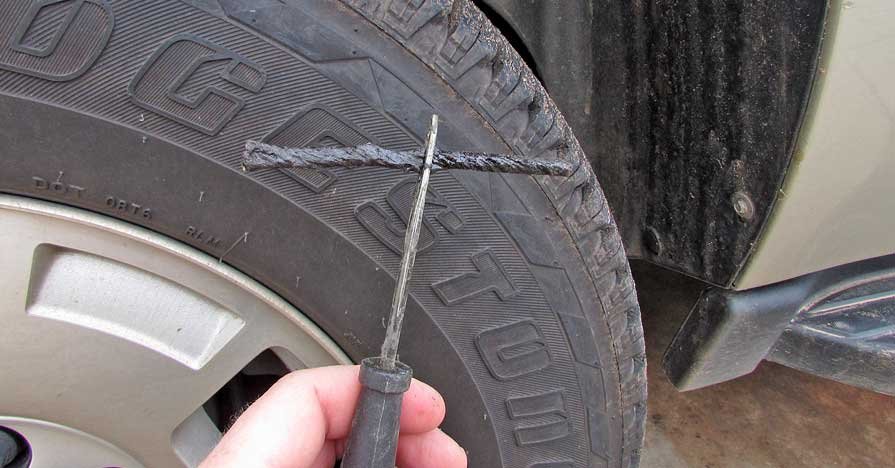
Once you have identified a slow leak in a tire, it’s important to take steps to fix it as soon as possible. While some leaks can be fixed temporarily, others may require a more permanent solution.
Patch or plug
If you have a puncture, the best way to fix it is to use a patch or plug.
A patch is a small piece of rubber that covers the hole in the tire. It is held in place by a adhesive and prevents air from escaping through the hole.
A plug is similar to a patch, but it is made of a fibrous material that expands to fill the hole. Plugs are typically used for larger punctures.
How to fix slow leak with patch:
- To patch a tire, start by deflating the tire completely.
- Next, use a utility knife to cut out the damaged section of the tire.
- Once the damaged area is removed, apply a generous amount of adhesive to the inside of the tire.
- Then, place the patch over the adhesive and press it into place.
- Finally, inflate the tire to the proper pressure and you’re finished!
How to fix slow leak with slug:
- If you prefer to plug your tire, start by deflating the tire completely.
- Then, use a drill to make a small hole in the damaged area of the tire.
- Next, insert the plug into the hole and use a hammer to drive it into place.
- Finally, inflate the tire to the proper pressure and you’re finished!
If you are unsure of how to properly patch or plug a tire, it’s best to take it to a professional.
Replace rim
If the leak is coming from a damaged rim, the only way to fix it is to replace the rim. This is because the pressure from the air inside the tire is what keeps the rim in place.
Over time, the pressure can cause the rim to become damaged or even fall off entirely. Replacing the rim will help to restore the pressure and keep the tire inflated.
This is a fairly simple process, but it does require some special tools.
- To replace a car rim, first use a jack to lift the car up so that the damaged rim is accessible.
- Then, remove the tire from the rim by loosening the lug nuts and pulling the tire off.
- Next, line up the new rim with the bolt holes on the car and secure it in place with the lug nuts.
- Once the new rim is in place, lower the car back down and tighten all of the lug nuts for a secure fit.
- Finally, test drive the car to make sure that the new rim is installed correctly and that there is no vibration or wobbling.
By following these steps, you can easily replace a damaged rim yourself. If you are not comfortable replacing the rim yourself, it’s best to take the tire to a professional.
Useful read: How To Tell Which Tire Is Out Of Balance? 5 Symptoms To Look For
Slow leak tire sealant
Another option for fixing a slow leak is to use tire sealant. This is a liquid that is applied to the inside of the tire and hardens to form a seal.
Tire sealants are typically used for small punctures and leaks. They can be applied quickly and easily, and they provide a temporary fix.
- To use tire sealant, start by removing the valve cap from the tire.
- Next, insert the tube of sealant into the opening and squeeze it until the entire contents have been released into the tire.
- Then, re-install the valve cap and inflate the tire to the proper pressure. Check the pressure to make sure it is at the proper level.
- The sealant will harden in 24 hours, so it’s best to avoid driving the car during that time.
While tire sealants are a quick and easy way to fix a slow leak, they are not a permanent solution. The sealant will eventually wear away and will need to be replaced.
It’s also important to note that tire sealants can clog up the valve stem and prevent air from entering the tire. This can cause the tire to become flat very quickly.
If you decide to use tire sealant, be sure to check the tires regularly and add more sealant as needed.
Bead leak fix
If the leak is coming from the bead of the tire, it’s best to take it to a professional. This is because the bead is what seals the tire to the rim.
Bead leaks are typically caused by damaged or missing beads. In order to fix this type of leak, the entire bead will need to be replaced.
This process requires special tools and knowledge, so it’s best to leave it to a professional.
Useful tips: Can You Put Air in a Nitrogen Tire?
Prevention tips for avoiding slow leaks in your tires
There are a few things you can do to prevent slow leaks from happening in the first place.
First, be sure to check your tires regularly for any signs of damage. If you see any cracks, punctures, or other damage, be sure to have it repaired as soon as possible.
It’s also important to keep your tires properly inflated. This will help to prevent the tire from becoming damaged and developing a leak.
Finally, be sure to rotate your tires on a regular basis. This will help to evenly distribute the weight and pressure on the tires and will prevent them from becoming damaged.
FAQs about How to Fix a Slow Leak in a Tire
Can I drive on a tire with a slow leak?
It is not advisable to drive on a tire with a slow leak. A slow leak can be caused by a small puncture or hole in the tire, which can gradually get bigger over time.
If the hole is big enough, it can cause the tire to blow out while you are driving, which can be very dangerous. It is best to have your tire repaired or replaced as soon as possible.
If you must drive on a tire with a slow leak, be sure to check the pressure regularly and keep an eye out for any sudden drop in pressure. Also, avoid driving at high speeds and give yourself extra distance to stop in case of an emergency.
Do I need a new tire if I have a slow leak?
If the leak is small, you may be able to repair it with a patch. However, if the leak is large or if the tire has been damaged in any other way, it will need to be replaced.
In addition, if you have a spare tire that is in good condition, you can use that to replace the damaged tire until you are able to get it repaired or replaced.
How much does it cost to fix a slow leak?
The cost to fix a slow leak will depend on the size of the leak and the type of repair that is needed.
If the leak is small, you may be able to patch it yourself for a few dollars. However, if the leak is large or if the tire needs to be replaced, the cost can be much higher.
It’s always best to consult with a professional to get an estimate of the cost of repairs before proceeding.
Why is my tire losing air but no hole?
There are several reasons why a tire may lose air but have no visible hole. One possibility is that the tire has developed a small leak in the bead area, where the tire meets the wheel.
This type of leak is often caused by uneven wear on the bead, and it can be difficult to spot. Another potential cause of an invisible tire leak is a pinhole in the sidewall.
These types of leaks are often caused by road debris, and they can be very difficult to find. If you suspect that either of these problems is causing your tire to lose air, you should take the tire to a professional for further inspection.
In some cases, the problem can be repaired; in other cases, you may need to replace the tire.
Why do my tires keep losing air in the winter?
The reason is due to the change in temperature. Just as the cold can cause metal to contract, it can also cause air to compress.
This means that at lower temperatures, there is less air available to fill up your tires. As a result, you may find that your tires need to be inflated more often during the winter months.
Can a tire lose pressure without being punctured?
It is common for tires to lose pressure over time, even if they have not been punctured. There are several reasons why this can happen.
- As tires age, the rubber begins to break down and deteriorate, which can cause small leaks.
- Temperature changes can also cause tire pressure to fluctuate. Cold weather can cause the air inside the tire to contract, while hot weather can cause it to expand.
- Simply driving on the road can also cause a tire to slowly lose pressure. Every time a tire hits a bump or pothole, some of the air is released. Over time, these small leaks can add up and cause significant pressure loss.
How long do tire sealants last?
Most tire sealants will last for 2-6 months before they need to be replaced. This can vary depending on the type of sealant used, as well as the conditions in which the tires are driven.
For example, if you frequently drive on rough roads, your tire sealant may not last as long as someone who only drives on smooth pavement. Additionally, the temperature can also affect the longevity of tire sealants.
Sealants tend to last longer in cooler climates, while warmer climates can cause the sealant to break down more quickly.
Ultimately, it is important to check your tires regularly to ensure that the sealant is still effective. By following these guidelines, you can help extend the life of your tire sealants and keep your tires in good condition.
How long will a tire plug last?
A tire plug is a temporary fix for a punctured tire. It is not meant to be a permanent solution and should be replaced as soon as possible. A tire plug will usually last 7-10 years or 25,000 miles, whichever comes first.
However, it is important to keep in mind that a tire plug is not as strong as a new tire and may not last as long if it is subject to regular wear and tear. If you are using a tire plug as a temporary fix, be sure to check your tires regularly and replace the plugs as needed.
How do I know if my valve stem is leaking?
One of the first signs that your valve stem may be leaking is a hissing noise coming from your tires. If you hear this while driving, it’s likely that air is escaping from the tire and causing the noise. In addition, you may notice that your tire pressure is dropping more quickly than usual.
This is because air is continuously escaping from the tire, and it’s not being replaced at the same rate. As a result, your tire pressure will gradually drop over time.
There are a few ways that you can test your valve stem at home to see if it’s leaking. One way is to use a soapy water solution. Simply apply the solution to the valve stem and look for bubbles. If you see bubbles, that means air is escaping and you have a leak. Another
Can a slow tire leak cause a blowout?
A blowout is a sudden loss of tire pressure that can cause the tire to collapse. A slow leak can contribute to a blowout. When a tire loses pressure gradually, it weakens the tire walls and makes them more susceptible to rupture. Furthermore, the heat generated by friction can also lead to a blowout.
Can you use fix a flat on a tire with a slow leak?
Yes. Fix-a-flat is a product that can be used to temporarily repair a flat tire. It is designed for tires with small punctures or leaks, and it will not work on tires with large holes or serious damage.
If you have a tire with a slow leak, you may be able to use fix-a-flat to temporarily repair the tire. However, it is important to keep in mind that fix-a-flat is only a temporary solution. Here is a step-by-step guide on how to use fix-a-flat:
- Park your car on a level surface and turn off the engine. Remove the affected tire and set it flat on the ground.
- Open the fix-a-flat can and attach the hose to the nozzle. Insert the nozzle into the valve stem on the tire and depress the plunger to release the contents into the tire.
- Fill the tire with air to the recommended pressure and reattach it to your car. Drive slowly and carefully until you can get the tire repaired or replaced.
Once the tire has been repaired, it is important to take it to a professional to have the leak properly fixed. Otherwise, you risk damaging the tire or having the tire fail while you are driving.
Verdicts
If you have a slow leak in your tire, it is important to find and fix the problem as soon as possible. The causes of a slow leak can vary, but most often it is due to damage or wear on the tire.
There are several ways to repair a slow leak, depending on the cause. In most cases, fixing the leak will require replacing at least one component of the tire.
So, there you have it! A few tips for how to fix a slow leak in a tire. If you ever find yourself with a flat, don’t panic – just follow these simple steps and you’ll be on your way again in no time. By taking care of any leaks early on, you can avoid further damage and keep your tires in good condition for longer.

